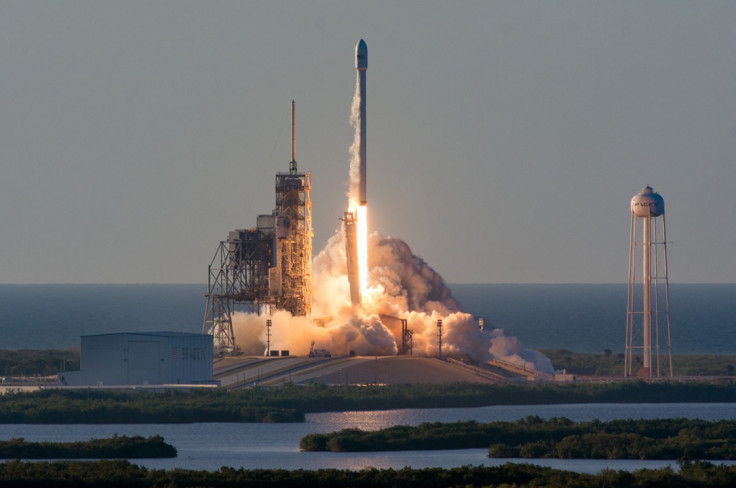Watch SpaceX successfully launch Inmarsat's bus-sized satellite, one of its largest payloads yet
SpaceX's latest launch came just two weeks after launching a top-secret spy satellite for the US government.

SpaceX successfully launched Inmarsat's fourth commercial communications satellite, one of its largest payloads yet, into orbit on Monday (15 May). Lifting off from the historic launch pad 39A at Nasa's Kennedy Space Centre in Florida, the space company's Falcon 9 rocket put the 13,500-pound (6,100 kg) Inmarsat-5 satellite into orbit more than 22,000 miles above Earth.
The massive satellite, larger than a double-decker bus, completed London-based Inmarsat's $1.6bn four-satellite Global Xpress constellation designed to deliver high-speed, global broadband service to mobile customers including airplanes, ships and the US military.
The satellite separated from the Falcon 9's second stage around 32 minutes after liftoff.
Due to the massive size of the Boeing-built satellite and the amount of fuel required to propel it, SpaceX did not attempt to land the first stage of its Falcon 9 rocket as it usually does. Instead, the spent rocket was allowed to fall into the Atlantic Ocean.
Ten Falcon 9 boosters have been successfully landed and recovered thus far, including one that has already flown twice. SpaceX plans to re-launch another used Falcon 9 rocket booster for a mission launching a communications satellite for Bulgaria Sat.
SpaceX originally intended to launch Inmarsat's heavy satellite using its upcoming Falcon Heavy rocket, but later switched to its smaller Falcon 9 due to scheduling concerns. The company tested its larger rocket for the first time earlier this month.
The successful launch marks SpaceX's sixth one this year and Inmarsat's first with the Elon Musk-owned company. Inmarsat-5 F4 was initially scheduled to fly last year but was delayed after a massive launch pad explosion in Cape Canaveral, Florida, last September that destroyed the rocket as well as Spacecom's $200m Amos 6 communications satellite.
SpaceX's operations were grounded for over four months following the accident. Due to the delayed rocket launches, Inmarsat decided in December to hire European competitor Arianespace for a mission slated for late June.
Quick video recap of Falcon 9 launch of Inmarsat-5 Flight 4 pic.twitter.com/W8eVUEsH6r
— SpaceX (@SpaceX) May 16, 2017
Inmarsat official says Inmarsat 5 F4 satellite is alive and kicking after successful SpaceX launch. Good signals received via Perth station.
— Stephen Clark (@StephenClark1) May 16, 2017
"For Inmarsat, reliability and resilience are paramount," Inmarsat CEO Rupert Pearce said in a statement. "Delivering global commercial services over the GX network, which we achieved at the end of 2015, was only the start of our Global Xpress project. I-5 F4 augments the capabilities of GX and, alongside our existing L-band constellations, enables Inmarsat to provide guaranteed global connectivity to industries and governments worldwide."
Since the launch pad accident, SpaceX has a reported backlog of more than 70 missions worth over $10bn. Earlier this year, the company's president Gwynne Shotwell said SpaceX aims to launch its Falcon 9 rockets every two to three weeks.
SpaceX's latest launch came just two weeks after launching a top-secret spy satellite for the US government earlier in May and successfully landing the booster to be re-flown later.
© Copyright IBTimes 2025. All rights reserved.





















